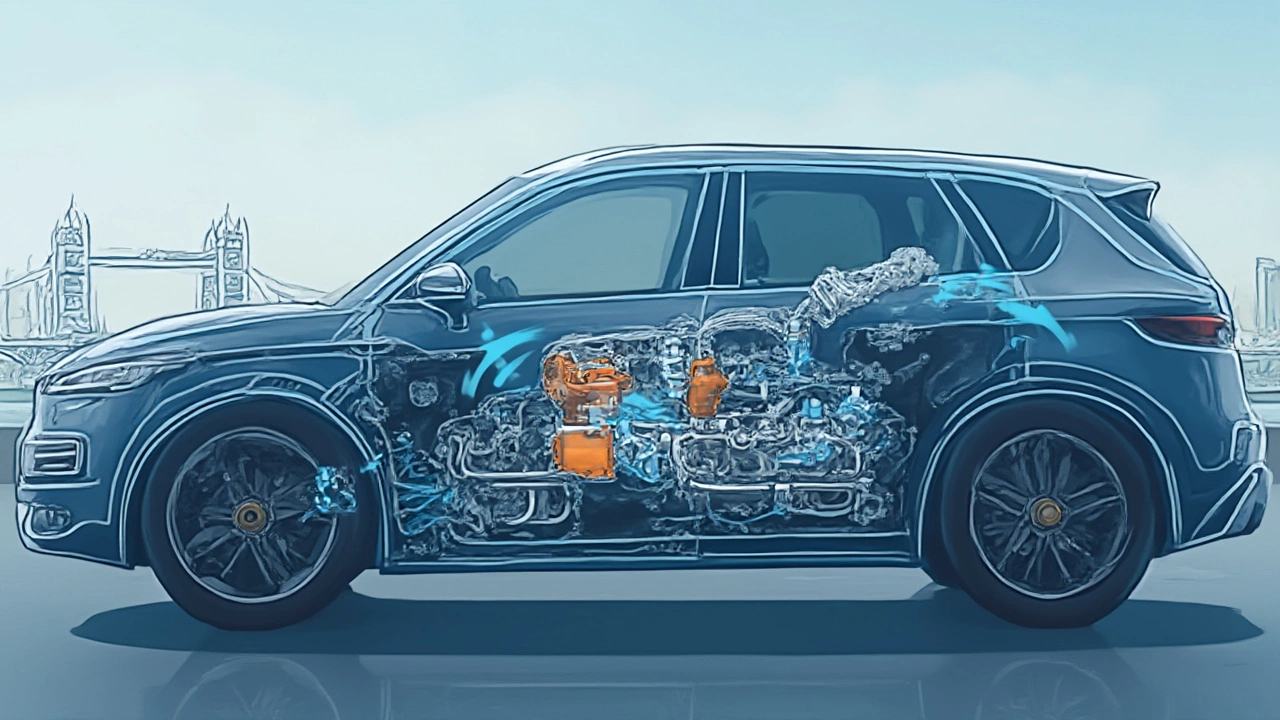Ever felt your car start to stutter or lose its get-up-and-go right in the middle of morning traffic? You’re not alone. Clogged fuel injectors are sneaky culprits behind all sorts of driveability headaches, often showing up out of the blue. I've seen it firsthand—a perfectly behaved family sedan turning grumpy just before school drop-off, leaving my son Gideon and me pretty frustrated. But you don’t have to play guessing games when something’s off. Knowing the signs of a clogged fuel injector can save you a load of time, money, and roadside stress. Let’s dig into the unmistakable symptoms, decode some facts, and see what you can actually do about it.
Understanding What Fuel Injectors Really Do
Fuel injectors sound fancy, but their job is simple: they squirt the perfect amount of fuel into each cylinder at exactly the right moment. If fuel injectors get clogged, they can’t spray fuel properly, leaving your engine hungry or flooded. Your car’s computer is smart, but it can’t work magic if the basic parts are slacking off.
Back in the old days, carburetors did this job, sort of. Modern engines rely on injectors for cleaner burns, better gas mileage, and lower emissions. Each injector is like a tiny spray gun, using high pressure to atomize fuel into a fine mist that mixes with air. Too little mist? Your car sputters. Too much? You’ll smell raw gas, burn extra fuel, or foul up sensors. Clogged injectors throw this delicate system out of whack. Most cars today, whether you’ve got a Toyota Corolla or a Ford F-150, use multi-port or direct injectors, both sensitive to gunk in your gas.
Why do injectors get clogged? Gunk and varnish build up as gasoline ages, carbon deposits form as fuel burns, and microscopic debris can sneak in from iffy gas stations or even a worn-out fuel filter. Some areas with “top tier” gasoline offer more cleaning additives, but nothing keeps things perfectly pristine forever. Studies from the SAE (Society of Automotive Engineers) have shown that even top-brand fuel can leave behind deposits after as little as 10,000 miles. Worse, ethanol blends break up old dirt, sending it right into your injectors if the filter can’t snag it.
Pinpointing the Symptoms of Clogged Fuel Injectors
The signs are hard to miss once you know them. Here’s the stuff car owners talk about most often around the neighborhood:
- Engine Misfires or Rough Idling: Imagine trying to run a race while holding your breath. That’s your engine with not enough fuel: you’ll feel vibrations, sometimes hear popping, or watch the RPM needle dance.
- Poor Acceleration or Power Loss: Merging onto a busy interstate shouldn’t make you anxious—but clogged injectors rob you of horsepower right when you need it. You press the pedal, and your car acts like it’s not listening.
- Hard Starts or No Start: An injector stuck totally closed won’t let enough gas reach a cylinder, causing tough cold starts, long cranking, or flat-out refusing to start after parking overnight.
- Stumbling or Hesitation: Ever have your car lurch, jerk, or hesitate when you quickly step on the accelerator? Inconsistent fuel delivery does that, and injectors top the list of suspects.
- Bad Fuel Economy: You’ll feel the pain at the pump. Clogged injectors mean uneven or incomplete combustion, so your engine burns more gas to get the same job done.
- Strong Fuel Smell: If the injector is leaking instead of just being clogged, the extra fuel can create a strong, sometimes eye-watering gasoline odor—especially near the exhaust pipe.
- Check Engine Light: OBD-II systems notice something’s wrong when the mix of air and fuel gets out of balance. They trip the clogged fuel injector code—usually as a cylinder misfire or lean/rich condition.
It’s easy to think these symptoms could be anything: spark plugs, bad wires, a sloppy mass airflow sensor. But if several clues show up at once, don’t ignore the injectors. A clogged injector usually makes a single cylinder act up; if you unplug each injector’s harness in turn (like a basic “cylinder balance test”), and the engine doesn’t change on one, it’s often the culprit.

Real-World Impact: Performance, Emissions, and Your Wallet
Clogged injectors aren’t just an annoyance. They can push your whole fuel system into a downward spiral. Picture this:
- Your car needs to maintain a clean air/fuel ratio, usually around 14.7:1 for gasoline engines (stoichiometric). One clogged injector makes the mixture off in one cylinder—resulting in loss of power, knocking, and maybe even pre-ignition.
- Modern engines with oxygen sensors pick up on the rich or lean conditions. Your powertrain control module (PCM) “compensates,” often dumping more fuel in—wasting gas and making the car feel lazier.
- Bad combustion means higher emissions. Smog tests fail, and states like California or New York can hold your registration hostage until you fix it.
- All that unburned fuel risks damaging your expensive catalytic converter, which can cost over $1,000 to replace. Think about that next time you ignore a misfire.
You probably want the hard numbers. Here’s a gauge of how clogged injectors can steal performance and money:
| Affected Factor | Before Clogging | After Significant Clogging |
|---|---|---|
| MPG (Miles Per Gallon) | 28 | 20 |
| Idle Smoothness | Steady | Rough |
| 0-60 Acceleration (Seconds) | 8.0 | 10.5 |
| Emissions (g/mi CO) | 0.76 | 2.1 |
So yeah, ignoring the symptoms isn’t just rough on the car—it can punch you right in the wallet at the gas station, repair shop, or inspection lane.
How to Confirm the Diagnosis and Tips for Prevention
If you’ve ticked off more than one sign above, you’re probably dealing with a clog. Here’s how to know for sure and what you can actually do about it, even if you aren’t a mechanic:
- Scan Tool and Codes: Even a cheap OBD-II scanner that you can plug into your dash will show pending misfire codes (like P030X, where X is the cylinder number). Find the pattern—it often matches a specific injector’s location.
- Visual and Auditory Test: (For the DIY crowd) With the engine running, use a mechanic’s stethoscope or even a long screwdriver pressed to the injector body. You should hear a steady clicking. No click usually equals trouble, though a weak click could also mean partial clogging.
- Fuel Pressure Test: This is a little more advanced, but connecting a basic gauge to the fuel rail and monitoring during a key-on cycle can reveal leaks or low delivery. If you don’t want to mess with tools, most shops offer this service for under $50.
Here’s what you can do to stop clogs in the first place or fix them at the earliest stage:
- Fill up only with trusted brands, especially those labeled “Top Tier.”
- Change your fuel filter as recommended. Contaminants sneak past old filters, especially after 50,000 miles.
- Use a proper fuel system cleaner every 5,000–8,000 miles. Some, like Chevron Techron or Lucas, actually help. Just don’t expect miracles if the clog is major.
- Drive your car more than short hops. Long highway drives burn off more carbon deposits than idling in city traffic.
- Take action at the first sign of trouble. Waiting months turns a $15 cleaner fix into a $200 injector replacement—or worse.
Seriously, if your check engine light flashes (not just stays on), that’s a sign you could wreck your catalytic converter if you keep driving. Don’t keep pushing it. If you aren’t sure, a trusted shop can test the balance and spray pattern and even ultrasonic-clean injectors for less than you might think.
It pays to be proactive. There’s no fun in showing up late to a family event because your car got stubborn. Gideon jokes it’s like the car has Monday morning blues—don’t let yours get there.






